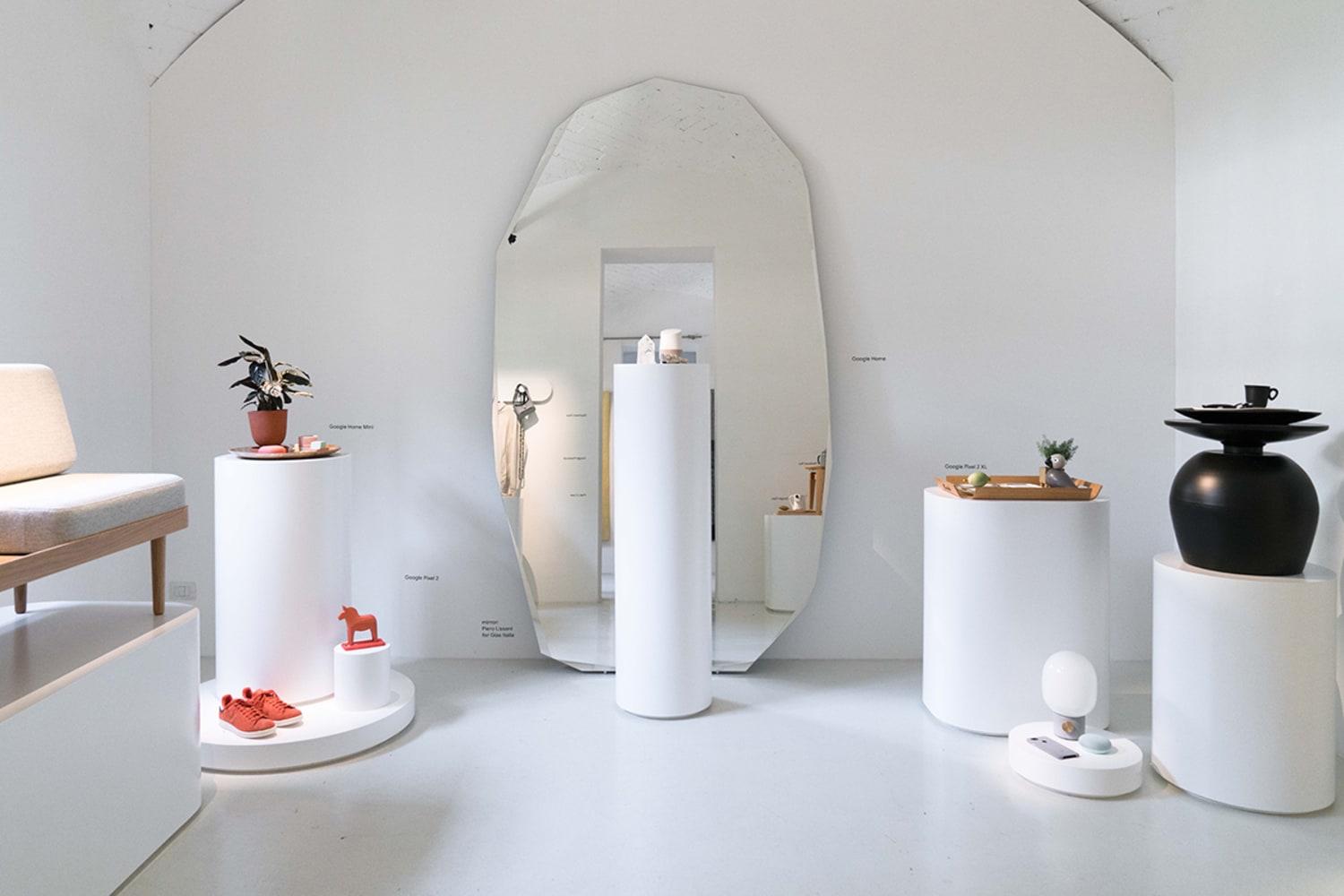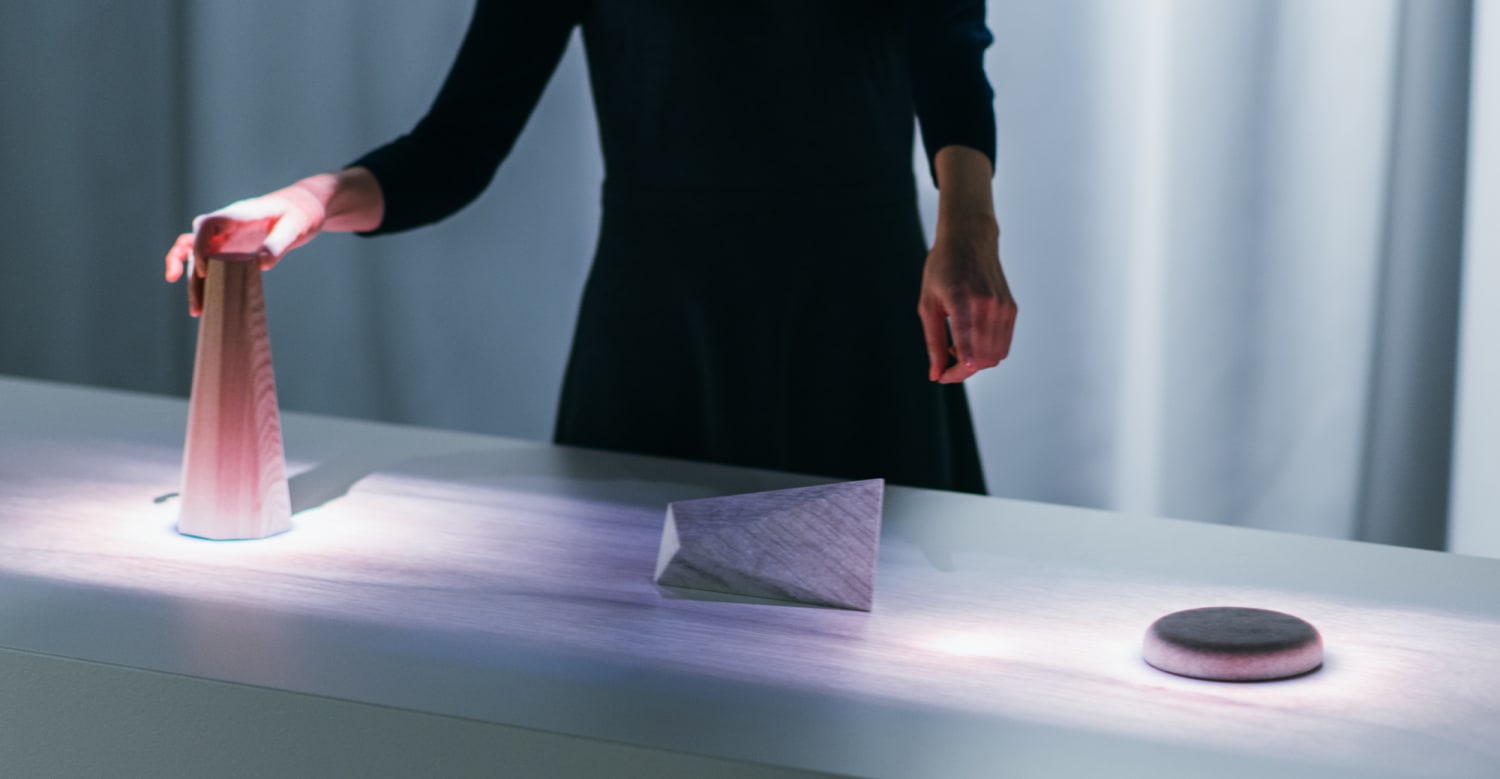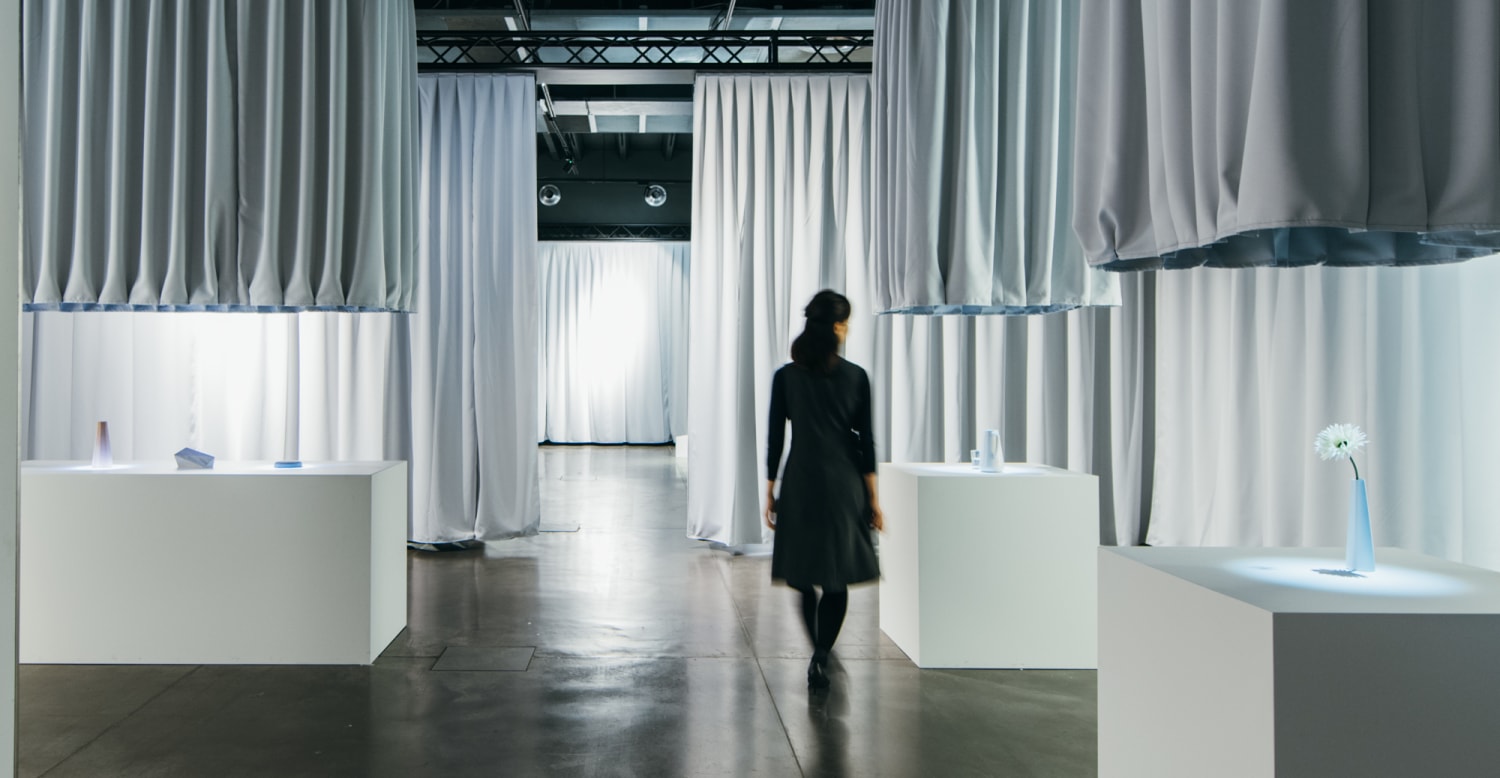As technology seeps pervasively into our everyday lives and even our everyday touchpoints, designers are seeking ways to humanize the aesthetics of hardware using clever design cues. Last week Google launched Softwear, a design installation curated by trends forecaster Li Edelkoort that explores how technology can harmoniously weave into everyday life.
Google made its Milan Design Week debut this year with an installation "that brings to life the sensorial experience of hardware."

“When you hold Google in your hands—what do you want it to look like, feel like, and how do you want to interact with it?” asks Ivy Ross, vice president of design for hardware products at Google. This is the question addressed to her design team, which officially formed a mere two years ago in 2016 and has already launched a family of consumer hardware products that debuted last year. The Softwear installation at Salone del Mobile this year integrates Google’s products within a contemporary landscape that fuses technology and lifestyle.


The word “human” is integral to Softwear and Google’s approach to designing hardware. During the Soft Futures panel discussion last week, Ross addressed the design language that her team has adopted for Google products, which includes curved edges, bespoke fabric and pops of color. “Google Home Mini is like holding a stone in your hand,” explains Ross, referencing the product’s curved design and light grey color, and likening hardware to something relatable that is found in nature.


A 2017 Deloitte study reveals that Americans collectively look at their smartphones more than 12 billion times a day—that’s an average of 47 times per person. Devices are increasingly part of everyday life and companies like Google are reinventing the visual language of technology, finding ways to soften the perception of hardware with material that resonates with soft furnishings at home, color that projects optimism, and design that reflects nature.


Sony also explores the relationship between tech and humans in the Hidden Senses exhibition, where technology is infused into ordinary everyday objects and interiors. The stealth inclusion of technology in Sony’s project shifts traditional notions of what hardware should look like. “We hope to break the preconceptions in the communication between the product and user by improving people’s emotional feeling to products,” Yutaka Hasegawa, vice president of Sony Design, tells Designboom. “Forget IoT, it should be IoE for emotions.”



Audio expert Sonos teams up with Danish design brand HAY to unveil The Hay for Sonos One Limited Edition Collection of colorful speakers during Salone del Mobile last week and will officially be on sale later this year in September. “These speakers deserve to be treated like furniture: strong, independent objects that fit different needs and spaces,” says Mette Hay, co-founder and creative director at HAY in a release. The brightly colored speakers resonate with HAY’s colorful homeware palette made for contemporary living.

At last year’s Milan Design Week, JWT Intelligence identified tech designed in a way that blends in with home interiors as Invisible Tech. This year shows that technology doesn’t want to disappear, but instead wants to change its obtrusive perception into one that looks and feels familiar, and, more importantly, is emotionally relatable.
Please provide your contact information to continue.
Related Content

VML, Lab-Grown Leather Ltd. and The Organoid Company announce partnership to create world's first T-Rex leather
